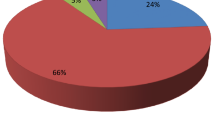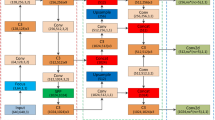Abstract
It is very difficult to accurately separate the smoke contour in fire video. Because the scene of a fire is complex and changeable, and there are often many interference factors, such as continuously changing light and fast switching scenes, it is difficult to accurately guarantee the separation of smoke contours. In this paper, an aggregate channel feature algorithm that combines color, saturation and texture is designed, and a fast pixel block feature matching method is used to build the background model. In order to overcome the error caused by scene switching, a dynamic threshold control method based on the background switching speed is proposed, which eliminates the interference caused by the dynamic background update, and effectively extracts the foreground smoke pixels and smoke contour map. The experimental results show that the algorithm can accurately extract the smoke layer contour map, and compared with the traditional foreground extraction algorithms, the algorithm is faster and more accurate.









Similar content being viewed by others
References
Achanta R, Shaji A, Smith K (2012) SLIC Superpixels compared to state-of-the-art Superpixel methods. IEEE Trans Pattern Anal Mach Intell 34(11):2274–2281
A. I. Awad, M. Hassaballah, Image feature detectors and descriptors, in book: studies in computational intelligence, Springer International Publishing, 2016.
Barnich O , Droogenbroeck M V. Droogenbroeck, “ViBe: a powerful random technique to estimate the background in video sequences. 2009.
Cao XF, Mei ZS, Zhang X et al (2014) A real-time fire smoke recognition algorithm based on fuzzy features is proposed. Fire Sci Technol 33(6):670–673
Turgay Çelik, Hüseyin Özkaramanlı, Demirel H. Fire and smoke detection without sensors: image processing based approach// European Signal Processing Conference. IEEE, 2015.
Ghaeminia MH, Shokouhi SB (2019) On the selection of spatiotemporal filtering with classifier ensemble method for effective gait recognition, signal. Image Video Process 13(1):43–51
JianDong Han, YiFan Deng. Multi-channel pedestrian detection algorithm combining texture and contour features ). J Comput Appl, 2017(10).
Hofmann M , Tiefenbacher P , Rigoll G. Background segmentation with feedback: the pixel-based adaptive Segmenter// 2012 IEEE computer society conference on computer vision and pattern recognition workshops. IEEE, 2012.
Yan Hu, Hui Qing Wang, Tai Wei Yao, et al. Video fire smoke recognition based on block segmentation and SVM. Comput Simulat, 2012, 29(9):170–173.
Hu Y, Wang HQ, Yao TW et al (2014) Fire smoke identification based on Harris feature point detection and tracking. Computer Engineering and Applications. Comput Eng Appl 50(21):180–183
Jia Y, Yuan J, Wang J, Fang J, Zhang Q, Zhang Y (2016) A saliency-based method for early smoke detection in video sequences. Fire Technol 52(5):1271–1292
Sun Li, Yong-Sheng S, Bo W, et al. Video Smoke Detection Based on Color Transformation and MSER. Transactions of Beijing Institute of Technology, 2016.
Megret O, Vauquelin O (2000) A model to evaluate tunnel fire characteristics. Fire Saf J 34(4):393–401
K. Muhammad, S. Kan, S.W. Baik, Efficient Convolutional Networks for Fire Detection in Surveillance Applications, In book: Deep Learning in Computer Vision (Edited By Mahmoud Hassaballah, Ali Ismail Awad), pp.63–88, 2020.
Muhammad K, Khan S, Palade V (2020) Edge intelligence-assisted smoke detection in foggy surveillance environments. IEEE Trans Ind Informat 16(2):1067–1075
Ojala T , Pietikainen M , Harwood D . Performance evaluation of texture measures with classification based on Kullback discrimination of distributions// Pattern Recognition, 1994. Vol. 1 - conference a: Computer Vision & Image Processing. Proceedings of the 12th IAPR international conference on. IEEE.
Palanisamy G, Ponnusamy P, Gopi VP (2019) An improved luminosity and contrast enhancement framework for feature preservation in color fundus images, signal. Image Video Process 13(4):719–726
Pan ZF, Yang SS, Chen N (2015) Fire smoke recognition based on image entropy. J Jiangsu Univ Sci Technol(Natural Science Edition) 29(1):52–57
Qureshi WS, Ekpanyapong M, Dailey MN, Rinsurongkawong S, Malenichev A, Krasotkina O (2016) QuickBlaze: early fire detection using a combined video processing approach. Fire Technol 52(5):1293–1317
Salahat E, Qasaimeh M (2017) Recent advances in features extraction and description algorithms: a comprehensive survey, IEEE international conference on industrial technology (ICIT), Toronto, Canada. MAR 22-25:1059–1063
B Uur Töreyin, Dedeolu Y, Enis A, et al. Wavelet based real-time smoke detection in video// European Signal Processing Conference. IEEE, 2005.
Wang T, Liu Y, Xie ZP (2011) Video smoke detection based on adaptive neural fuzzy reasoning system. Comput Eng 37(23):186–188
Wen ZB (2016) Research on smoke detection algorithm based on video image feature extraction,” Master dissertation. University of Science and Technology of China, Hefei
Wojek C , Dollar P, Schiele B, et al. Pedestrian Detection: An Evaluation of the State of the Art. IEEE Transactions on Pattern Analysis & Machine Intelligence, 2012.
Yuan F (2011) Video-based smoke detection with histogram sequence of lbp and lbpv pyramids. Fire Saf J 46(3):132–139
Yuan F, Shi J, Xia X, Fang Y, Fang Z, Mei T (2016) High-order local ternary patterns with locality preserving projection for smoke detection and image classification. Inf Sci 372:225–240
Yuan FN, Zhang L, Xia X et al (2020) A wave-shaped deep neural network for smoke density estimation. IEEE Trans Image Process 29:2301–2313
Zhou BL, Song YL, MengHong Y (2016) Research on smoke detection technology of ship fire based on image processing. Ship Sci Technol 38(9):111–115
Author information
Authors and Affiliations
Corresponding author
Additional information
Publisher’s note
Springer Nature remains neutral with regard to jurisdictional claims in published maps and institutional affiliations.
Rights and permissions
About this article
Cite this article
Yin, Y., Cheng, H. & Liu, H. Flue gas layer feature segmentation based on multi-channel pixel adaptive. Multimed Tools Appl 79, 29069–29085 (2020). https://doi.org/10.1007/s11042-020-09466-5
Received:
Revised:
Accepted:
Published:
Issue Date:
DOI: https://doi.org/10.1007/s11042-020-09466-5




